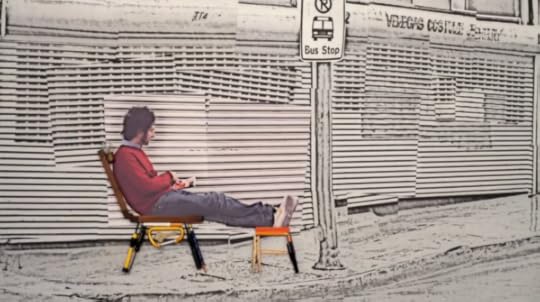Matador Network's Blog, page 2277
April 24, 2014
This camera trick lets you SEE sound
Have you ever wondered what sound looks like? Probably not, right? We tend to think of sound as something that can only be perceived through the ears and not through the eyes, but as it happens, there’s a neat camera trick that can allow you to see sound waves in real time. It’s called “Schlieren flow visualization,” and it basically involves using two parabolic mirrors, a high-speed camera, and science (I’m going to leave it to the video to give the actual explanation).
The end result is that we’re able to see silhouetted visualizations of all sorts of different sounds, from the clap of a hand, to the firing of an AK-47, to the explosion of a firecracker. 
The post This amazing camera trick lets you SEE sound appeared first on Matador Network.

10 signs you're an Argentine

Photo: Daniel Iván
Hacé clic para leer este artículo en español. Tambien podés darnos un “me gusta” en Facebook!
1. You address everyone as if they’re family.
You’d use the informal “vos” even with the Pope, who’d appreciate it, of course, because he’s Argentine.
2. You’re not afraid to kiss.
You greet everyone with a kiss — the teachers, the waiters, whoever. And you send virtual kisses in every email, whether it’s about work, love, or a fight: “Te mando un beso grande.”
3. If you see a car with a plastic bottle on its hood/roof, you know that…
It’s for sale! Nobody seems to know exactly where this custom came from, but it’s as universal as having asado on Sunday. Argentina remains for me, after years living as an expatriate, a red Torino with a bottle of bleach on its roof.
4. You know exactly what a bidet is for.
And, dammit, if only they were available everywhere! Unfortunately, it seems like other countries have overlooked this convenient way to keep their “pudendas” clean.

More like this: 15 differences between a normal friend and an Argentinean friend
5. You’ve pushed a broken-down car…more than once.
A friend’s, a neighbor’s, some stranger’s in the middle of the highway. You ended up all sweaty and covered in grease/dirt, but with your new friends you had the satisfaction of having done your duty to help, which is simply part of our culture.
6. You still have nightmares about dying after mixing wine and watermelon.
How many times did they warn us about this deadly combination? Even today I make sure that wine and watermelon are never found on the same table. What’s the science, exactly, behind this folk wisdom?
7. You begin each statement with a long “Cheeee.”
“Che” is accompanied of course by whichever termination seems appropriate: the always effective “boludo/a” (or “asshole”) or the milder “¿viste?” (see?). And depending on context, you need the universally qualifying adjective “re.” So it’s like: “Cheeee, estoy re feliz. Me vi con Fulano el finde, ¿viste?”
8. It never occurred to you that sharing a mate was sharing germs with your friends.
Or maybe it did but you didn’t care. And you’d never (EVER) think of using your own mate in a group as if it were a coffee, as people do here in the US. Mate is for sharing.

More like this: 9 worst types of Argentine men
9. Friends are…
People we love. Even if we grow up punching each other. Even if we get pissed off about the littlest things. We always patch it up. We just eat dinner together and then like new we’re family again, because there’s no friend like an Argentine.
10. You’re born knowing that life is simple pleasures.
You cry easy and you laugh your ass off at whatever. You go from a furrowed brow (your default facial expression) to a huge smile without any filter. There’s always room for one more person at the table. There’s always a reason to make a toast, a joke, to discuss, to complain. You’re Argentine; you have an incomparable capacity to enjoy the simple things in life. 
The post 10 signs you were born and raised in Argentina appeared first on Matador Network.

What Londoners say vs. what they mean
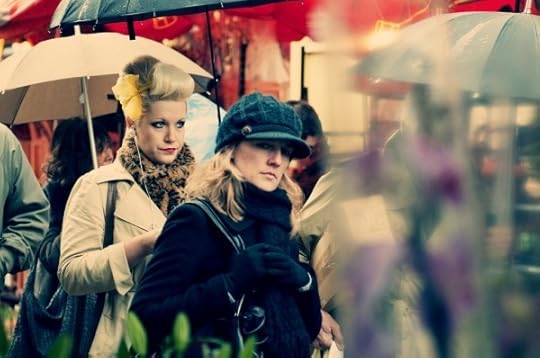
Photo: Chris JL
Londoners who live in London are a rare breed. In my office of 40, only two people were actually born and raised in the megacity of 8 million. Lucky for me, my partner and many of his friends are some of these scarce specimens. I thank them in advance for providing me with such robust material.
What they say: Excuse me.
What they mean: Get the f*** out of my way.
They’ve been politely trying to get around you on the sidewalk for 30 meters. When a Londoner stops silently seething you know you’ve really messed up.
What they say: That’s far.
What they mean: I can’t be bothered to go there.
It can also mean it’s outside of Zone 2.
What they say: London Salary.
What they mean: We pay you more to compensate for the fact that a pint costs twice as much as it should and you spend half your salary on rent.
You’ll also feel better about suffering four housemates in a three-bedroom house while your friend easily affords a huge flat in Birmingham.
What they say: You’re not from London.
What they mean: You grew up outside of Zone 3.
If you didn’t live in a borough that 1 in 3 Londoners (not entirely scientific) have heard of, you might as well be from Slough. Where’s Slough? Exactly.
What they say: It’s a proper pub.
What they mean: You don’t need a supplementary income to get pissed there.
They serve beer. And none of that craft brew shit, either.
What they say: I read in the Daily Mail…
What they mean: I’m a self-righteous, middle-England, right-wing, anti-immigrant, homophobic, misogynist, anti-intellectual, racist bastard.
I don’t think people from London like Daily Mail readers very much.
What they say: I read in the Guardian…
What they mean: I want you to know I’m not a self-righteous, middle-England, right-wing, anti-immigrant, homophobic, misogynist, anti-intellectual, racist bastard.
See above.
What they say: I read in the FT…
What they mean: I do, or will one day, own this country — if not the world.
Dry and unbiased fact, with a capitalist slant — there are powerful words in the Financial Times.
What they say: I’m on my way…. No, I’m not on the Tube yet.
What they mean: I’ll be there anywhere between 30 and 60 minutes after we agreed to meet.
Theoretically, they should be there on time. It’s just that Transport for London has other plans. A true Londoner knows of their lies but plans their arrival based on just the Tube journey anyway — ignoring the walk to the station, delays, and line changes.
What they say: How much is it?
What they mean: I would just like to confirm that I cannot afford this.
Because, you know, I’m still doing an internship and getting paid expenses.
What they say: Hipster.
What they mean: He wears tight trousers.
True Londoners remember when wearing baggy jeans, low and backwards, were all the rage. And they’re nostalgic for it.
What they say: I don’t go south of the river.
What they mean: That’s not London, there isn’t even a Tube stop.
Sorry, the Overground is not the Tube.
What they say: I don’t go north of the river.
What they mean: That’s where everything that’s wrong with London is happening.
Who needs trees? We’ve got Brixton Market.
What they say: I don’t go out in East London.
What they mean: I’ll have to take three night buses and walk for 20 minutes to get home if I go out in East London.
It’s also likely to involve getting vomit on my shoes.
What they say: I only go out in East London.
What they mean: I’m from East London.
And why go anywhere else?
What they say: This is London.
What they mean: Stop complaining.
In exchange for the exorbitant cost of living, meandering tourists, and transportation that gives you black snot, you get to live in the greatest city in the world. 
The post What Londoners say vs. what they mean appeared first on Matador Network.

Why the media silence on Venezuela?
We’ve all heard about the uprisings and political mess that’s been occurring in Ukraine in recent weeks. We’ve also heard ad nauseum for about a month about how search parties haven’t been able to find the black box of an obviously crashed plane. What we haven’t heard much about — much to the shame of the Western media — is that uprisings have been occurring in Venezuela over the past couple months.
Henry Reich, the creator of the YouTube channel MinutePhysics, has become personally involved in the unrest because his illustrator, Ever Salazar, is living in Ciudad Guayana, Venezuela. Salazar has had to deal with the protests on a daily basis, and in this video he gives an excellent explanation of what it’s like to live in a country where “insanity has become normal.” 
The post Yes, there’s a country other than Ukraine where things are getting out of control appeared first on Matador Network.

22 short films you should watch now
Short films are the Rodney Dangerfields of the movie world — they just can’t get any respect. That is to say that while shorts can be more or equally intellectually stimulating, aesthetically innovative, and emotionally complex as feature-length movies, they generally go ignored in the mainstream media.
Here’s a list of amazing, respect-deserving shorts that make the collective case against that stigma — and, best of all, each film is instantly streamable.
1. Six Shooter (2004, dir. Martin McDonagh)
Four years before his breakout feature, the genius 2008 In Bruges, Irish playwright and humorist Martin McDonagh won an Academy Award for his brutal first film, Six Shooter. Starring the incomparable Brendan Gleeson and even featuring Gleeson’s son, Domhnall, the short somehow makes closing your eyes and cringing while all hell breaks lose on a cross-country train seem fun rather than harrowing. A tricky feat only McDonagh’s wit could pull off.
2. Logorama (2010, dir. Francois Alaux, Herve de Crecy, & Ludovic Houplain)
The French filmmaking collective H5 made one of the funniest and most disturbing films of all time entirely out of animated brand logos. Featuring a murderous Ronald McDonald and a truly stupid Pringles Original policeman, Logorama manages to satirize capitalism, Hollywood, and the nature of mediocre art-cinema all at the same time. Not bad for 16 minutes.
3. The Dante Quartet (1987, dir. Stan Brakhage)
Speaking of hell, Stan Brakhage’s The Dante Quartet is a visualized rendition of just the place. Brakhage is widely considered the ‘grandfather of the avant-garde,’ and the overwhelming beauty of this six-minute paint-on-film short supports the nickname. Wise, sad, and complicated, the video thankfully concludes in paradise.
4. The Video Dating Tape of Desmondo Ray, Aged 33 and ¾ (2013, dir. Steve Baker)
How long does it usually take a film to make you cry? An hour? Thirty minutes? No heart is safe and no eyes leave unwatered in the span of this 2014 SXSW Film Festival hit, often referred to simply as Desmondo Ray, which runs three minutes and twenty-two seconds. Prepare the tissues!
5. Reindeer (also known as Reindeer Wrangling by Nowness, 2012, dir. Eva Weber)
The desolate landscape of Lapland is not one often seen in the Western mediascape. Can you recall the last time you saw footage from Scandinavia without either a volcano or Ben Stiller as Walter Mitty? I can, and I’m grateful that it was in Eva Weber’s 2012 short Reindeer, made for the Nowness group and nominated for the 2012 Short Film Grand Jury Prize at the Sundance Film Festival.
6. Werner Herzog Eats His Shoe (1980, dir. Les Blank)
Upon the passing away of famed documentarian Les Blank in 2013, my mind turned immediately to this singular and aptly titled film. We can hardly believe our eyes when Werner Herzog — who lost a bet with fellow master-filmmaker Errol Morris — literally eats his shoe, but even more surprising is that little beat your heart skips at the sight.
7. The New Tenants (2009, dir. Joachim Back)
Moving into a new apartment is a stressful journey in the first place, but you’ll be grateful for the mildness of your personal experiences when you see the 2009 Oscar-winning, darkly comic short above, written by Anders Thomas Jensen.
8. Two Cars, One Night (2004, dir. Taika Waititi)
The emergence of Maori filmmaker Taika Waititi onto the world comedy scene was abrupt and exciting when his short, Two Cars, One Night was nominated for an Academy Award in 2005. Waititi has since gone on to write and direct Eagle Vs. Shark, Flight of the Conchords, and the amazing 2010 feature Boy. What a start he had here.
9. Stalker Guilt Syndrome (1998, dir. Jonah Kaplan)
Ever wondered what the odd guy who’s following you from street to street is thinking? Jonah Kaplan and comedian Marc Maron developed an absurdist inner dialogue that captures the experience perfectly in this short.
10. While The Night Slept (2012, dir. Mitchell James O’Hearn)
This film and the one below represent two of the most impressive recent works by filmmakers who were still in school while making them. In this case, writer/director/editor Mitchell O’Hearn dredges up feelings of real grief and loss in less than seven minutes of screen time. It’s an abstract film, but a deeply powerful one. Click above to watch it on Vimeo.
11. Forever’s Gonna Start Tonight (2011, dir. Eliza Hittman)
The same could also be said of Eliza Hittman’s gorgeous 16mm Forever’s Gonna Start Tonight, the title of which comes from a classic Bonnie Tyler song you’ll be unable to get out of your head post-film. Hittman, who’s received significant acclaim for her award-winning 2013 indie It Felt Like Love, staked her claim on coming-of-age stories with this gorgeous short, an Official Selection of the 2011 Sundance Film Festival.
12. Nostalgia (1971, dir. Hollis Frampton)
Don’t be scared off by the director Hollis Frampton’s association with the American avant-garde cinema movement of the 1970s. Though Frampton is an experimental genius, his 1971 epic Nostalgia is comprehensible, simple, and extremely focused. Thirty-eight minutes of personal memorabilia burning might not sound riveting, but it’s a landmark commentary on material culture and the plague of nostalgia in American society.
13. The Meaning of Life (2005, dir. Don Hertzfeldt)
I won’t pretend to know what the meaning of life is, and you perhaps shouldn’t either. That isn’t because you don’t know — which you might — but because it’s unlikely you could ever animate a film on the subject as idiosyncratically or as virtuosically as Don Hertzfeldt did in his award-winning 2005 short.
14. Spiritualized – “Hey Jane” Official Video (2012, dir. A.G. Rojas)
The line between a ‘music video’ and ‘short film set to music’ is often a thin one, but it’s rarely been so blurry as in the first video for Brit pop band Spiritualized’s single, “Hey Jane.” I like the song very much, but it’s the incredible vision and final tracking shot set up by director A.G. Rojas that really tickles my personal fancy. Warning: NSFW, except for cinephiles.
15. What Do We Have In Our Pockets? (2013, dir. Goran Dukic)
Perhaps the best collage film ever made, Goran Dukic’s 2013 lark is a quaint little inner-city romance. Try too hard not to smile and you’ll have an aneurysm.
16. Meshes of the Afternoon (1943, dir. Maya Deren & Alexander Hammid)
No amount of Freudian psychoanalysis can truly penetrate (excuse the pun) this dream-like, intricate black-and-white masterpiece. Surreal, beguiling, and somehow disturbing, the 1943 short announced the arrival of multihyphenate experimental director Maya Deren to the American film industry.
17. The Snowman (1982, dir. Raymond Briggs)
Welcome your childhood back with this widely beloved masterpiece by the writer Raymond Briggs and director John Coates, a story of companionship and closeness between a young man and his snowy pal.
18. Hotel Chevalier (2007, dir. Wes Anderson)
Wes Anderson’s 2007 film The Darjeeling Limited came with a surprise iTunes-only companion film that’s since won arguably even more acclaim than the feature it accompanied. Featuring beautiful dialogue between Jason Schwartzman and a young, very nude Natalie Portman, Hotel Chevalier may be short as Anderson’s work goes, but it’s no career side note.
19. The Terrys (2011, dir. Tim Heidecker & Eric Wareheim)
I grant you that the comedy duo Tim & Eric are not for everyone. But when they hit the laughs, they hit them hard, as in their somewhat disgusting but uproarious story of two freakish weirdos who produce a ‘special’ kind of child. Gross-out genius.
20 and 21. Gregory Go Boom (2013, dir. Janicza Bravo) and Brazzaville Teen-Ager (2013, dir. Michael Cera)
The freshest of all the voices listed here, Janicza Bravo managed to nab some of the career-best performances from comedy stars Michael Cera, Sarah Burns, and Brett Gelman for this 2013 short film for the comedy website Jash. But Gregory Go Boom is best watched as a companion piece to Michael Cera’s short film Brazzaville Teen-Ager, which premiered a month before on the same website. Together, the films represent a massive step forward for Bravo and Cera, successfully demanding a reevaluation of any typecasting we might have forced on the actor.
22. Social Butterfly (2013, dir. Lauren Wolkstein)
A sensual mood, a meticulous eye, and a sharp performance from indie stalwart Anna Margaret Hollyman distinguish Lauren Wolkstein’s lovely 2013 short from several others with which it screened as a selection of the Sundance Film Festival. Keep your eye on Wolkstein — she was listed as one of the 25 Faces of Indie Film, and her most recent short as a producer, Jonathan’s Chest (dir. by Chris Radcliff and co-produced with Autumn Tarleton), is equally impressive. 
The post 22 short films you should watch immediately appeared first on Matador Network.

April 23, 2014
Global greetings cheatsheet
I’ve just downloaded this image onto my phone as a quick-read guide to saying “Hello!” in over 20 different languages. Although having a pronunciation guide would also be helpful, as I know the “t” in salut! is silent, and god only knows how to say “Hi!” in Hungarian. It’s a cool visual, at any rate, and may especially help travelers who are planning to see several countries during a round-the-world journey. 
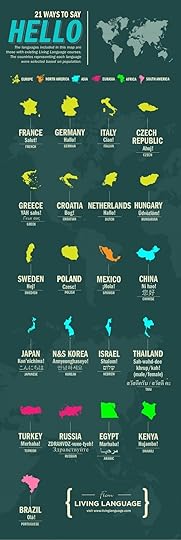
Explore more visuals like this one on the web’s largest information design community – Visually.
The post The ultimate global greetings cheatsheet [infographic] appeared first on Matador Network.

4 songs that define you

Photo: Justin C.
Mexico / Ohio
“Si Te Vas” by Shakira
You’re hanging out with these girls who eat literally everything: from crazy shit like oxtail soup and Szechuan-style frog legs to the cheesy bread at Red Lobster. You make pilgrimages from Oberlin to Cleveland to feed their cravings. There’s high-performing Sophia, editor of your campus newspaper and a concert pianist. There’s Ariana, constantly quizzed about where she’s ‘from,’ and her dry, unperturbed answer, “I’m Chinese Jamaican.” There’s Stephanie, from San Francisco, French-educated, super fucking fancy, and a real joy to party with. Drunkenly confesses your smarts once intimidated her during the political theory class you had together.
These are the girls who’ll offer you love and real-world knowledge when your shitty boyfriend unceremoniously dumps you over a bad cell-phone connection. When they look knowingly at you and say, “You need alcohol, lots of alcohol,” please believe them. You won’t always need alcohol, but for the next few days you’ll need a lot of it. After you’ve all gotten drunk off boat-sized glasses of rum, they’ll walk with you down the sandy avenues of this tiny Pacific beach town in Southern Mexico, and together you’ll find a real Italian restaurant. The owners will feed you reams of spaghetti soaked in pesto, and you’ll begin to feel your appetite again.
Washington, DC
“Perth” by Bon Iver
You’re living in a punk house that doesn’t have a roach problem yet. It’s a summer of outdoor cookouts and natural disasters. Hurricane Irene will hit soon, and you and your housemates will hole up for days with Buffy and pizza. But now it’s July, and you’re all fucked up over some Capitol Hill staffer. He’s sexy in a weird way, looks a little like George Clooney, if you strain your eyes.
But your relationship is going nowhere, just strong chemistry and uncomfortable conversations, an avoidant ex he just can’t shake. Your friends are all quick to mention how prone you are to make excuses for him. Looking back, you know you rushed things, from the moment you met him at a dive bar, to the kiss you prompted on the porch, to him crawling awkwardly into your bed that night.
You feel more stuck than ever — you know things can’t improve, but you’ve grown seriously tired of being alone. And there’s something beautiful and sad about this feeling, of wanting something to last but knowing it can’t.
He hates the phone, so you break up with him twice over g-chat. The second time you’re successful. You never see him again and move away the next year to California.
San Francisco
“Acabou Chorare” by Bebel Gilberto
You’re walking around North Beach on Saint Patrick’s Day. You’ve been staying with family for a short visit and desperately need to get out of their palatial home. You need to connect.
Things have been heating up back in DC with an old flame, but nothing’s for certain and as always when you don’t have a clear plan, a clear next step, your self-regard is a little low. You’re prone to wandering and feeling sorry for yourself.
Before setting out you read that City Lights Bookstore is open until midnight, so that’s where you go. You’re hanging out in the political theory section, because you studied it in college, and then you notice this guy asking someone for advice on where to sightsee. He’s cute — tall, skinny. Not exactly your type, but promising. You say something, in that way you have, which comes from a Southern, folksy mother and your irksome tendency of always acting like a yenta. He asks what you’re reading, and then for your number. You meet again, the next night, for pizza in your aunt’s ritzy neighborhood. He’s from Brazil and you speak together in Spanish. He’s nice, from Bahia, but sort of boring. Lingers over his food. You’re saying fairly obvious things about race and class, but he treats every statement like a revelation. Walks you home and says, “Wait…” in a way that makes you desperately uncomfortable after you decide to go inside without kissing first, except for that one-cheek Brazilian peck.
Philadelphia
“Can’t Hardly Wait” by the Replacements
It’s like you were 16 once, and so your 16-year-old self, in a way, is watching you. But you’re not 16 anymore, you’re 25. You’re dressed in a black thrifted t-shirt and some black jeans and sunglasses, and your friend just cut your hair. So you’re looking particularly countercultural, and the person holding your hand is the same person you secretly (and at times not-so-secretly) crushed on for many years.
And you guys are walking around in Philly, like some young hipster couple, and the weird thing is, you sort of are. But, as always, the truth is so much more complicated than what our vintage clothes and flannel shirts project. And your 16-year-old self, on the drive up, she’s so nervous she wonders if she needs to ask your best friend’s boyfriend to pull over, just for the option of stomach-emptying release.
But the thing is you’re almost 26 now, little Miss. So you’ve gotta pull it together, buck up, hold fast. Or something. You can’t be nerves vomiting like you did the day before a big algebra test, when your dad was putting pressure on you to just pass the class, Anne. Pass the damn class.
Inside there’s a raging pit of anxiety, and you feel scared to just ignore it. Like maybe it’s telling you that you really aren’t so far from 16 as you thought, or 19 or 22, for that matter. You are, in a sense, living your punk-rock teenage dreams, but it’s the little girl inside you that’s looking hard for some reassurance from the person lying next to you.
But something, some voice inside, is compelling you, no, telling you, to stay put. Don’t fucking move, that voice is saying. Because this is your life, right here. It’s not in five years from now, it’s not when you fully move to San Francisco, it’s not buried in an ancient childhood bedroom, it’s here, sitting right next to you. 
The post 4 songs that define your travels, anxiety, drunkenness, and relationships appeared first on Matador Network.

Surfers from beneath the waves [vid]
Surfing is already probably the coolest looking sport out there, so it shouldn’t come as too much of a surprise how awesome it looks from underneath the water. But it looks fucking incredible.
LA-based filmmaker Morgan Maasen took a dip under the water and filmed the ocean, the waves, and the surfers from below. So if you’re having a rough day in your office, just close your door for a minute, pop on your headphones, and imagine you’re drifting in the waves of Hawaii. 
The post Watching surfers from beneath the waves is incredible and surreal appeared first on Matador Network.

To understand Ukraine follow the gas
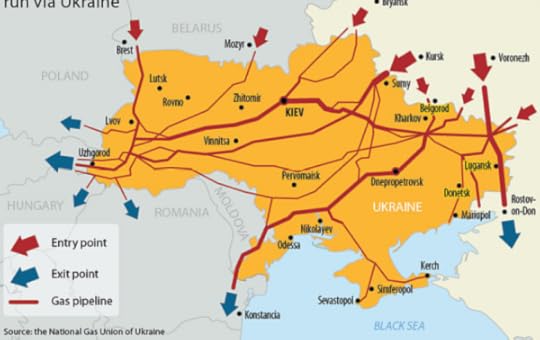
Map: PolicyMic
Shocking no one, Russia’s top natural gas producer, Gazprom, announced last month that it will cancel a discount on the price it charges for gas in Ukraine. The bargain, a sweet 30% off the price of gas, was a bid by Moscow to deter Ukraine from accepting a trade deal with the EU.
“This is not linked to politics or anything,” Russian President Vladimir Putin told reporters on Tuesday, regarding the discount cancellation.
The ongoing Ukraine crisis is often cast as a battle of values, East versus West. But another way of looking at things is to follow the old gas lines.
Ukraine would freeze without Russia.
Some 60% of Ukraine’s consumed gas comes from Russia. Over the years, this reliance has given rise to a so-called gas “mafia” in Kyiv. Ukrainian oligarchs, working closely with Russian suppliers, have taken advantage of the dependency. It is widely believe that these elites siphon money from state coffers and actively prevent Ukraine from developing a sustainable energy sector. All the while, foreign investors are scared away.
Similarly, Russian energy supplies help Moscow keep a firm grip on other former Soviet states like Moldova and Georgia. In September, Russia’s Deputy Prime Minister Dmitry Rogozin threatened to cut off Moldova’s gas supply during the winter if the country continued on its pro-EU economic course. “We hope,” said Rogozin to Moldavians, “that you will not freeze.”
Europe is hooked too.
Russia supplies, but Ukraine is the middleman. This helps to explain why some European states (like Germany) have been cagey about imposing sanctions on Russia. Germany and Ukraine are Gazprom’s biggest foreign purchasers.
Russia is Europe’s largest natural gas supplier, supplying about one-third of the continent’s natural gas, more than half of which travels through Ukraine. Important pipelines pass through Ukraine to Slovakia, and then on to Germany, Italy, and Austria.
So, what would happen if Russia switched off the Ukrainian pipes? Actually, it has done just that twice over the last decade, in 2006 and again in 2009, amid pricing disputes between Kyiv and Moscow. The result: gas shortages in several European countries.
Already Europe is working to wean itself off Russian supplies. Ukraine’s woes might help to speed up that process.
It’s a two-way street.
Russia needs Europe too. Oil and gas trade accounts for half of Russia’s annual export revenue and more than half of Russia’s federal budget. Important to note is that many of Russia’s important gas pipelines go through Western Ukraine, which is decidedly pro-Europe.
“I would argue that Russia has more to lose than Europe at the moment,” says Tim Boersma of the Brookings Institution. “Russia needs European demands. It is making roughly $100 million a day from hydrocarbons.
What about America?
Washington is making moves. The US doesn’t export natural gas yet. But congressional Republicans especially are calling to loosen export restrictions, with the idea that if Washington puts more gas on the market, it can (economically) cut Russia down to size.
The US Department of Energy is issuing permits to American corporations that will let them start exporting gas in 2015.
Fun fact: Who is now leading the US State Department’s new Bureau of Energy Resources? It’s Carlos Pascual, former US ambassador to Ukraine.
So what about that new global order?
Eurasia experts and political hacks have been talking big about a new global energy order inspired by events in Ukraine. Chaos in Ukraine, goes this logic, will threaten natural gas supplies and push Europe to look for non-Russian gas sources.
It’s already happening. US energy behemoth Halliburton Co. will soon start fracking in Poland. Royal Dutch Shell will start hunting for natural gas in Ukraine next year.
In fact, Europe is already way less energy dependent on Russia than it was in 2009, the last time Moscow switched off the Ukrainian pipelines. Germany, for instance, has found alternative energy sources in Norway and Algeria.
2009 was a turning point. And 2014 could be Russia’s biggest mistake yet. 
This article originally appeared on PolicyMic and is reprinted here with permission.
The post To understand what’s really happening in Ukraine, follow the gas lines on this map appeared first on Matador Network.

8 signs you’re still a tourist in Hawaii
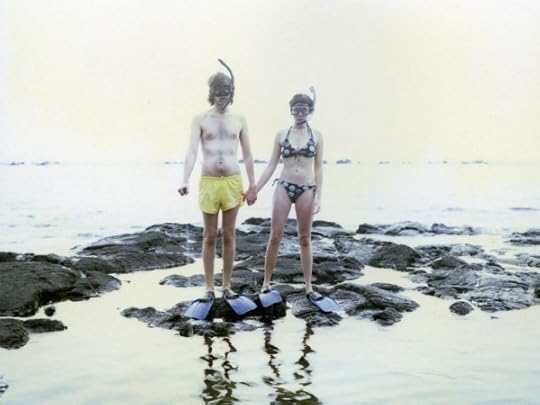
Photo: gregory mc.
1. You’re driving your shiny new sports car…through the rainforest.
Every local knows that in order to truly enjoy your surroundings in Hawaii, you have to own a cruiser or a beach vehicle that can hold all your toys and take a beating. Usually, this is an old pickup truck you can throw your surfboards, kayaks, and friends in. Only tourists are cruising the rugged back roads and rainforests of the island in a shiny new sports car, afraid to get it a little dirty from a day of adventure.
My favorite drive, Maui’s rugged North Shore from Kapalua to Wailuku, has the best panoramic views — at a cost, though. You have to drive along an unpaved path etched into the side of the mountain, teetering off the edge, thwarting certain death for just a little while. Rental car companies technically forbid you to travel this road because of the conditions.
But locals know the unspoken right-of-way law: If you’re going mauka (toward the mountain), yield to oncoming makai (toward the sea) traffic. This is especially imperative on a road that’s a hair wider than a golf cart. Cruising this road, you’ll always encounter the occasional svelte sports car, whipping around corners, filled with tourists who’re angry you won’t make room for them. All you can do is observe the ‘rules of the road’ and hope others follow suit.
2. Your skin is pasty.
There’s a difference between trying to avoid skin cancer from harmful UV rays and being completely, blindingly pale. Many tourists visit Hawaii straight from the mainland winter, where the sun hasn’t shone in weeks, possibly months. As if the Hawaiian sun isn’t glaring enough, a look at a pasty tourist’s skin is a good reason for locals to put on some Ray-Bans and walk on.
Boatloads of pasty tourists tend to congregate on main thoroughfares: Front Street in Lahaina on Maui is a popular one. There, tourists bobble along in the hot sun, working on their ‘tans.’ But later, they’ll be at pau hana (happy hour) rubbing aloe vera all over their burning skin. Skincare’s a hard lesson to learn for a tourist, but important nonetheless.
3. You pronounce it ‘high-low’ and the ‘like-like’ highway.
Hawaiian words are notoriously hard to pronounce, and Hilo (hee-low) and the Likelike (lee-kay-lee-kay) Highway are the least of your worries. Most people aren’t accustomed to all the vowels in the Hawaiian alphabet, but after time transplants learn how to pronounce the local kine slang. When tourists show up and butcher the local language, it’s painful, but funny.
I’ve heard a lot of people in the Puna District (an area of the Big Island, 30 miles south of Hilo) helplessly ask for directions to ‘High-low,’ clearly looking for ‘Hee-low.’ It’s an honest mistake on any novice’s part. Another common mispronunciation is the Hawaiian snack poke, which is diced, marinated ahi tuna salad. Pronounced ‘po-kay,’ people often pronounce it ‘po-kee,’ or worse, ‘poke,’ as in “I will poke you if you pronounce poke wrong.”
4. You still shop at the ABC Store.
Overpriced beverages, gimmicky aloha shirts, and chocolate-covered macadamia nuts? Not unless you’re a tourist. ABC Stores litter the tourist spots on all the islands. I think there are two within a one-block radius in Waikiki.
Once you’re shopping at Times Market, Foodland, or Safeway for your day-trip and grocery needs, you’re in.
5. You’re wearing anything other than Locals brand slippahs on your feet.
Locals in Hawaii have rough feet from continuously being immersed in salt water, walking over treacherous lava rock barefoot, and having their toes in the sand. Locals brand slippahs, purchased at Long’s Drug Store for $5.99, are all you need.
The best thing about Hawaii is a poor man and a rich man side by side are indiscernible. The poor man wears board shorts, a tank top, and beat-up Locals slippahs. The rich man wears board shorts, a tank top, and beat-up Locals slippahs. The tourist sticks out like a sore thumb: They’re wearing their ritzy, strappy sandals or loafers, have manicured toes, and yelp aloud when stepping on the hot sand.
And real locals will wear their Locals beyond their shelf life too, because everyone knows it takes a while to break in a good pair of shoes.
6. You still think “aloha” only has two meanings.
A word packed with so much significance, aloha has applications for all facets of life, not just in coming and going, and locals know the importance of “living aloha” on the islands. Many tourists believe aloha only means “hello” or “goodbye,” but it really signifies a way of life through unity and oneness with mankind and da ‘aina.
7. You haven’t made spam musubi part of your regular diet.
Perhaps the sweetest and most savory little snack you can get your hands on, spam musubi is a staple in any local Hawaiian’s diet. You can find these delicious little suckers everywhere: plate lunch joints, da beach, on the counter at the gas station, you name it. Spam musubi is a great snack any time of day, and it’s portable, too. They’re perfect for driving, alongside your saimin (noodle soup), dinner, you name it.
Tourists are apprehensive. They know what spam’s four letters stand for and still haven’t developed a taste for nori (seaweed). Tourists get skittish about refrigerating everything, and, more often than not, these sushi-inspired treats are saran-wrapped and sitting atop the counter for convenience. But once you get brave and go for that first sweet and savory bite of spam musubi, you’re hooked.
8. You honk instead of throwing shakas.
Nothing is more of a dead giveaway that you aren’t a Hawaiian local than honking in traffic. We try to keep it calm, cool, and collected here on da island, and honking a car horn is aggressive and obtrusive to our way of life.
I once heard someone honk in traffic in the sleepy surfer town of Paia on the North Shore of Maui. As with most small towns, people tend to cross the street when there’s a break in traffic, especially over a two-lane highway coming from the beach.
In retaliation to the blatant noise pollution by the obvious tourist honker, a peeved local shouted, “Go back to the mainland!” then threw a shaka out the window. 
The post 8 signs you’re still a tourist in Hawaii appeared first on Matador Network.

Matador Network's Blog
- Matador Network's profile
- 6 followers


